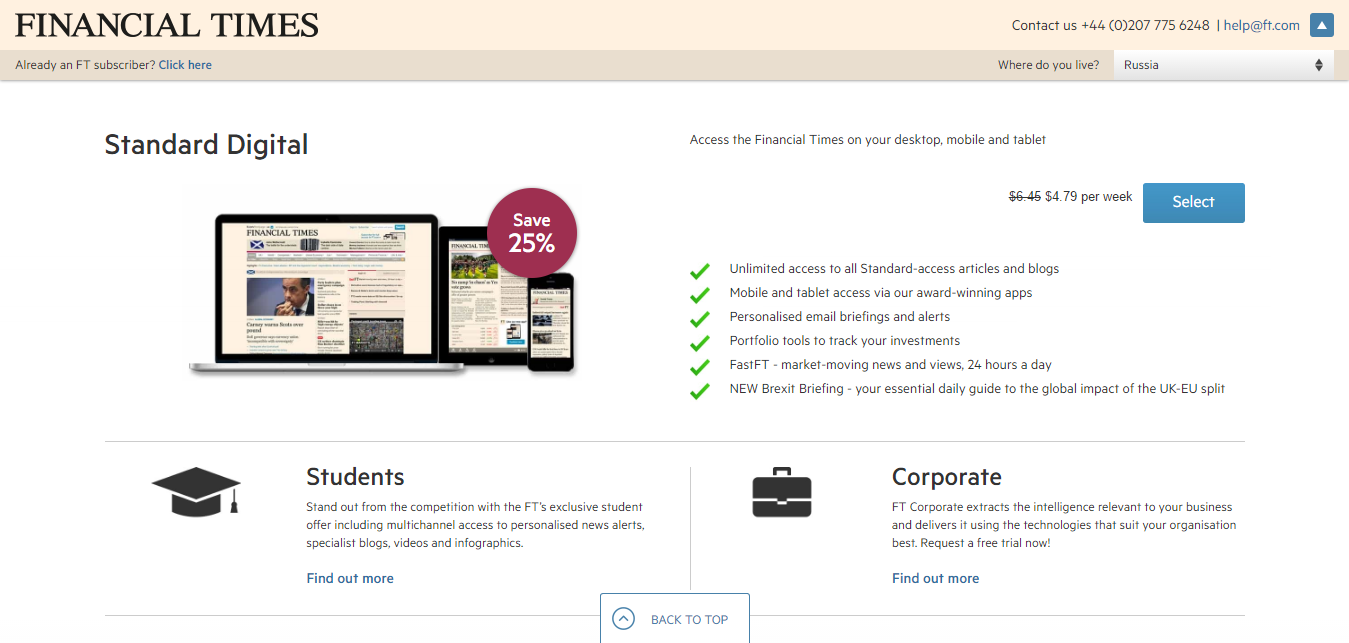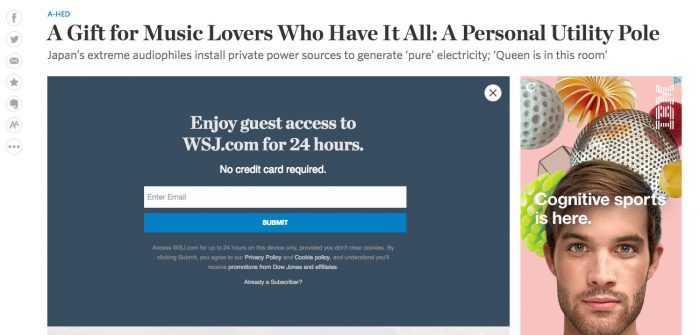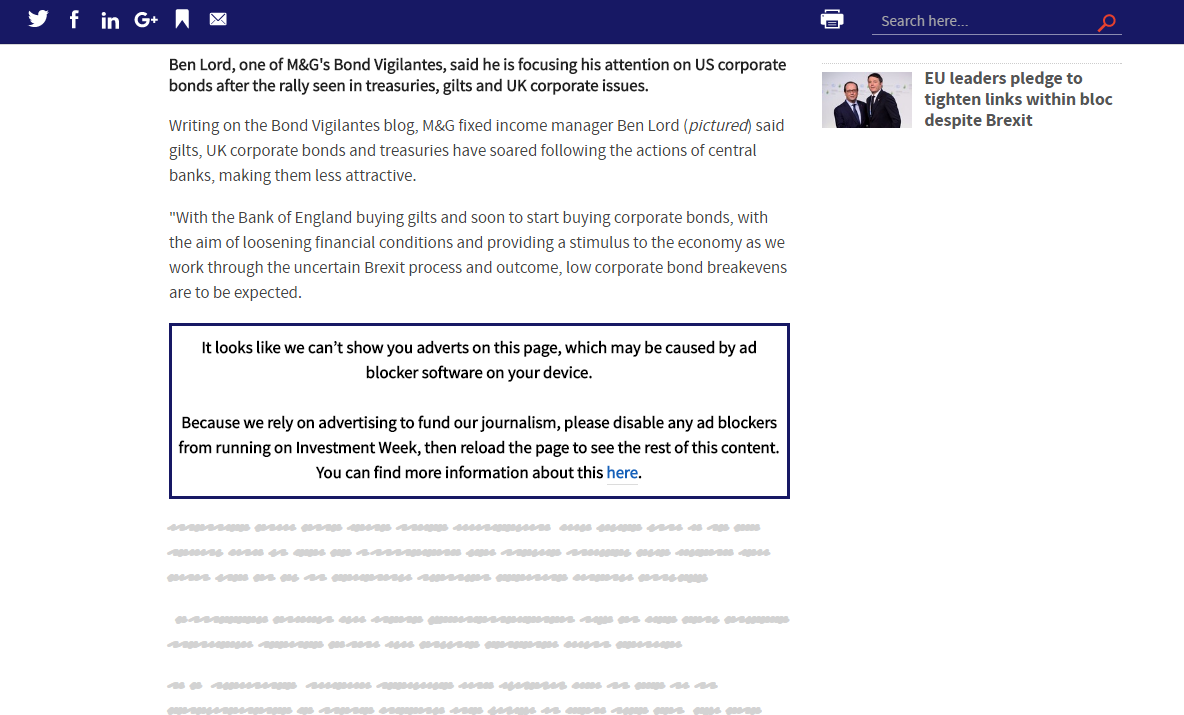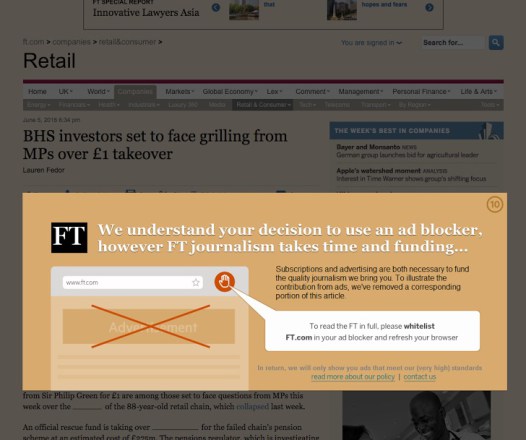How the media survive in a crisis: the experience of world media

The competition for the attention of the reader is growing, and advertising revenues are falling. Publishers have to deal with “banner blindness” and the change of social network algorithms, from which the lion's share of traffic comes. In these conditions, the media are constantly looking for new ways to earn money. We have gathered the experience of world media in the struggle for survival in the media business.
Cutting costs and closing print versions
Last year, the losses of the British holding The Guardian Media amounted to 58.6 million pounds sterling, and the print media holding's revenues decreased by 25%. In this situation, the company announced its intention to cut about 250 employees, including 100 full-time editorial staff.
')
Layoffs are part of The Guardian’s three-year break-even plan and transition to the digital first model.
The Independent: rejection of the print version
The publication, owned by Russian businessman Yevgeny Lebedev, completely abandoned the printed version. As part of the new strategy, The Independent expects to enter the world market and relies on traffic growth. Since the close of the paper version, the international online audience of the publication has grown by 31%, reaching 63 million unique users per month, and the company's revenues by 50%.
The decision to close the print version came because of the constantly falling print runs and, on the contrary, the growing online audience. Now The Independent is actively investing in its US division. The company believes that a strong international and scientific sections of the publication, as well as political comments, can be in demand in the US market.
Many have perceived the new publication strategy as a turning point in the history of the newspaper industry. Now everyone is watching, whether the British will be able to develop their business, not counting on the income from the "paper". Skeptics point out that The Independent is building its business model on bringing maximum traffic to each publication. The viability of this approach is questionable due to the growing power of Facebook and the rapid spread of ad blockers. People often do not switch to publication at all, preferring to consume content in the social network feed.
In addition, the British will compete for the attention of the audience with BuzzFeed, Vox, New York Times, Mashable and Business Insider. “The last thing that American advertisers are thinking about right now is“ we need another publisher, ”Ben Winkler, head of OMD media agency, says with irony about this.
The British believe that they will achieve commercial success. But in London media circles, they are still skeptical about this .
La Presse: a mobile application instead of paper
Since January 1, 2016, the Canadian daily newspaper has stopped publishing the print version on weekdays. The audience was offered to switch to La Presse + electronic application. The number of readers of La Presse + has already become a record for the entire 131-year history of the Canadian newspaper, exceeding 260,000 unique users of the mobile application.
According to the president of the publication Guy Crevier, since the announcement of the termination of the print version was announced, the weekly audience of the application has grown by almost 30% . La Presse profits from all its digital platforms already account for 82% of total revenues.
The publication is also proud that readers spend 40 to 60 minutes a day to read its mobile content. “The digital media industry has not heard of this level of involvement,” says Crevier. On paper, the editors decided to keep only the Saturday edition of the newspaper.
Paid subscription
The bet on paywall is made by the New York Times. The purpose of the publication is to double digital revenues: from $ 400 million received in 2014 to $ 800 million in 2020. To this end, NYT focuses on increasing reader engagement and increasing the number of paid subscribers of the online version of the newspaper.
Financial Times: rejection of paywall in high demand days
Refusing to pay for a one-day subscription, the Financial Times has received a 600 percent surge in sales .
On the eve of the vote for Brexit, when events in the UK attracted the heightened attention of the whole world, the publication removed the paywall from the site for 24 hours. As a result, the page, which tracked the results of the expression of the will of the British, gained about 4 million views. But readers not only came "for free", many of them bought a subscription to the Financial Times. Previously, something like this was done by the American editions, including The Boston Globe, which temporarily canceled the paid access during the terrorist attack in Boston.

According to FT Commercial Director John Slade, this success was not accidental. It is part of a tactical marketing plan, according to which the publication removes payvoll in the days of high demand for this or that topic. In particular, the newspaper did the same in the days of the crisis in Greece and in China.
Wall Street Journal: flexible subscription
The digital version of the Wall Street Journal now has 948,000 subscribers. However, WSJ intends to make its paywall more flexible for users. The publication tests 24-hour guest access for non-subscribers.
The British The Times also decided to soften its paywall , which until recently was almost the toughest in the world. Now the publication provides an opportunity for readers to familiarize themselves with two publications a week in exchange for registering on the site.

Direct Sales and e-Commerce
In search of additional sources of income, some publishers have taken up e-commerce. The logic is simple: if you have an audience and advertising opportunities, why not engage in direct sales? Among those who are already mastering e-commerce are Vox Media, Gawker, Business Insider.
Gawker and mattresses
In 2014, Gawker sold goods worth $ 150 million, thus earning about $ 10 million, which accounted for almost a quarter of the company's total revenues. At the same time, the publication is best for some reason able to sell mattresses .
How does this work? E-commerce-oriented publications (for example, product reviews) contain links to products in which readers of the site may be interested. Publishers receive from retailers a commission for each sale. Amazon, for example, pays media companies between 4 and 15% of the value of each transaction.
Hearst
The publishing house Hearst, which owns such brands as Cosmopolitan and Esquire, launched Bestproducts.com at the end of last year, which publishes 10 to 20 product reviews daily. The greatest income from the direction of e-Commerce, according to the company, brings her the publication of new gadgets .
Wirecutter: Product Reviews
Wirecutter publishes reviews of various products and earns commissions from Amazon and other retailers. His attendance is just over 600 thousand per month. The site does not pursue traffic, publishing only a few dozen articles per month. At the same time it is profitable. Last year, goods worth $ 150 million were purchased through Wirecutter.

Shops and wine clubs
The Italian editions of Gazzetta and Corriere Della Serre sell mainly books, toys, DVDs and clothing. A sports publication Gazzetta dello Sport has launched its own brand of football equipment and paraphernalia .
The wine company Global Wine Co has discovered a new sales channel thanks to The New York Times and The Washington Post. So there were nominal wine clubs:
» WSJwine
» Forbes Wine Club
» The New York Times Wine Club
The user enters the club and regularly receives packages with different wines specially selected by the sommelier team.
Media brands received an additional income channel, and Global Wine Co provided orders for regional resellers of wine, which deliver the company's products to consumers in different cities.
Inside the clubs work referral programs with bonuses for inviting friends. Wine clubs are gradually turning into self-sufficient organizations, growing even without media intervention.

Washington Post CMS
The American Washington Post plans to earn up to $ 100 million a year by selling licenses to use the CMS it developed called Arc Publishing.
From small publishers, WaPo takes $ 10 thousand, from large publishers up to $ 150 thousand per month. For this, let's face it, a lot of money customers get an editorial system that is able to manage paywall, test the success of headlines, publish content on social networks and analyze user data.
Event Business
The American Utah Media Group has made perhaps the most serious bet on the development of the “event” business. Its event management division has already become the largest in Utah and generates annual revenues of $ 7 million. In particular, Utah Media Group holds the Director of the Year competition and consumer exhibitions for home and weddings.
The Singapore Business Times successfully held a wine contest, which it now plans to make annual. The media holding Vox Media also decided to organize events.
How do the media earn on all this? Sources of income are ticket sales for events, sponsorship, company fees for participating and organizing events.
Fighting ad blockers
Advertising blockers are a headache for publishers around the world. More and more users are installing applications like AdBlock, which is why media revenues are falling. According to eMarketer , about 87 million people will use ad blockers in 2017 alone in the United States.

Blocking blockers
The Washington Post and a number of other publishers block access to their publications for users who use ad blockers. Such users receive a message reminding them that the media is living through advertising and calling to turn off their AdBlock.
By blocking access to content, Incisive Media, which owns more than 20 sites, has managed to reduce the number of page views using AdBlock by 40%.
On the websites of financial topics - Investment Week and Professional Advisor - Incisive Media has reduced the number of page views with the use of ad blockers by 45-55%.

Investment Week website with AdBlock enabled
Bild: ad-free special subscription
The German edition of Bild offers readers to pay for the 1.99 euro special subscription BILDsmart, after which the site will disappear 90% of advertising, and loading pages will be 50% faster. In the first three months, the use of ad blockers on bild.de has decreased by almost 80%.
Financial Times
The Financial Times simply removes individual words in texts for readers who use AdBlock and are not paid subscribers to the publication. At the same time, users see a message that the cause is an ad blocker.

New advertising formats
After it became finally clear that the traditional format of advertising in the media banner could no longer be a source of traffic for advertisers and money for the media, the media began to look for new ways to attract customers and the attention of the audience.
This is how native advertising appeared. In contrast to the screaming promotional format, the native returns to advertising the status of useful information. Brands create services and products, and native advertising conveys this information in an accessible form to the reader.
There are two main formats of native advertising. The difference between them is whether the advertisement is placed on the website of the publication or the brand places it on its domain.
Sponsorship Content
The first option is sponsored content. The brand places useful material on the website of the publication. Most often, journalists or advertising agencies work on it. Major publications even got their own native agencies.
Materials are marked as sponsorship or advertising, but in fact their usefulness overlaps the advertising effect. Due to this, users share the link with friends and increase the virality of the text.
Having abandoned banners, The Atlantic expects to receive three-quarters this year, and Slate - half of its digital income from the publication of native advertising. The New York Times has already announced that sponsored content is an important part of their business strategy .
In September 2015, the Financial Times began to publish native advertising on the site under the heading Paid Post. 74% of newspaper readers found the information they receive in sponsorship content useful. After the launch of the Paid Post rubric, the time spent by the user on the site increased by 123% .
Native ads in the feed
The second option - native advertising in the tape. The advertising link is in the block where the user is used to seeing articles. The brand message is embedded in the content of the site, but when the user navigates to the advertiser's site. This allows brands and media to get away from the problem of banner blindness. And the average CTR of native blocks is several times the CTR of traditional banners.

According to forecasts by BI Intelligence, by 2021 in the USA the share of this type of native will be 74% of the total revenue from display advertising. Now this figure is at the level of 56%.

Most often media uses both native formats. In the first case, the media shares with the advertiser the authority of its publication. Vice and BuzzFeed have built their entire business strategy on sponsored content.
The second method provides great opportunities for targeting and does not limit the advertiser’s format. Today, native advertising, embedded in the tape, as a way to monetize the site uses most of the major media: The Guardian, The Independent, Forbes, 9gag, The Sun and others.
Common databases for the sale of advertising
Advertising targeting today is evolving based on big data analysis. We told that 8 of the 10 largest publishing houses in Germany are working to create a single database of their readers . Combining data helps to reduce the dependence of publishers on Google and Facebook, which now dominate the market thanks largely to big data. "Drain" resources into a single bank, publishing houses in Germany create an alternative and relatively large data set that will allow them to earn more. In parallel, user data is joined by The Guardian, CNN, Financial Times, Reuters and The Economist.
Advertising time
The Guardian offered its customers to pay advertising not by the number of its impressions , but by the amount of time spent on reading an advertisement. Now advertisers can purchase “time slots” for 10, 15, 20 and 30 seconds with a 100% viewing guarantee.
“This is part of our strategy to switch to a smaller, but better advertising quality,” said Nick Hewett, commercial director of The Guardian. At the same time, according to him, the editors of the publication proceed from the fact that “not all advertisement views are the same”.
New distribution channels
The search for additional distribution channels led to an unexpected renaissance of mailing lists, which seemed to be a long time in the past. We recall, they appeared at the dawn of the Internet, after which the overwhelming majority of the media refused them.
Direct contact with Vox readers
Vox and Buzzfeed have introduced special workers to their staff who are exclusively engaged in the preparation and distribution of mailings. At Quartz, the number of email digest subscribers has already exceeded 200 thousand.
Media consider mailing lists as one of the platforms for distributing content, along with social networks, instant messengers and video services. “Mailing lists provide direct contact with readers using the platform needed by many people: their mailbox,” explains Melissa Bell, vice president of development and analytics for Vox Media, the decision to introduce a new staffing unit.
75 Washington Post Newsletters
The Washington Post has not one mailing list - there are more than 75 of them : from news of general interest to highly specialized and niche topics. This made it possible to increase traffic to the newspaper's website from e-mail digests by 129% last year. And the number of users of the WaPo mailing lists in 2015 increased by more than 1 million people.
Redesign
British tabloid The Sun rethought the development strategy, focusing on increasing the volume and speed of produced materials. Within the framework of the new strategy, a redesign was carried out, which allowed to increase site traffic by 25% .
The main focus during the redesign of the British did at the speed of loading publications. “We want so many people to consume our content as much as possible,” says Keith Pulley, editor of The Sun's online version. “We believe that if we can attract them, we can also convert them into loyal readers.”

The redesign allowed to reduce the time of appearance of illustrations and headings from 2.8 to 1 second, while the speed of full page load decreased from 15.8 to 11 seconds.
Redesign The Atlantic
American The Atlantic generally made the redesign of the site one of its main "chips". Previously, the publication changed its appearance every two years. Now it does it on a permanent basis. Only last year, The Atlantic conducted 60 tests against all design elements: from navigation buttons to the announcement of the mailing list. To receive feedback from readers, the publication uses a “clickable prototype” of the site, which users can modify at their discretion.
Source: https://habr.com/ru/post/308458/
All Articles